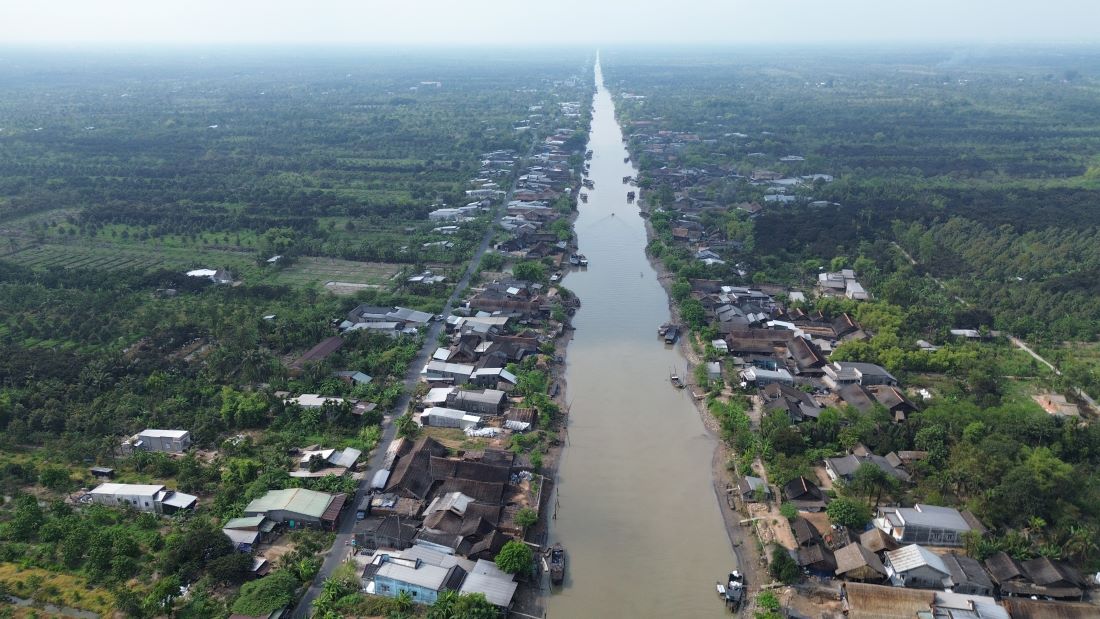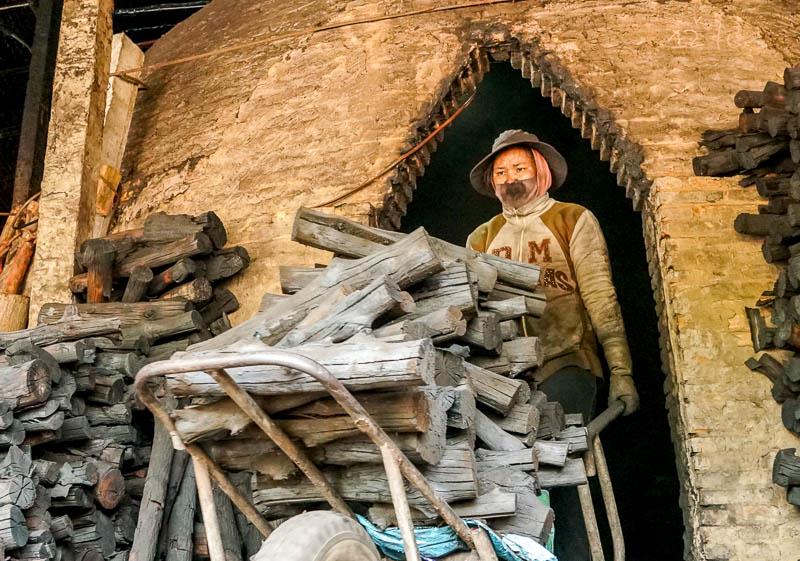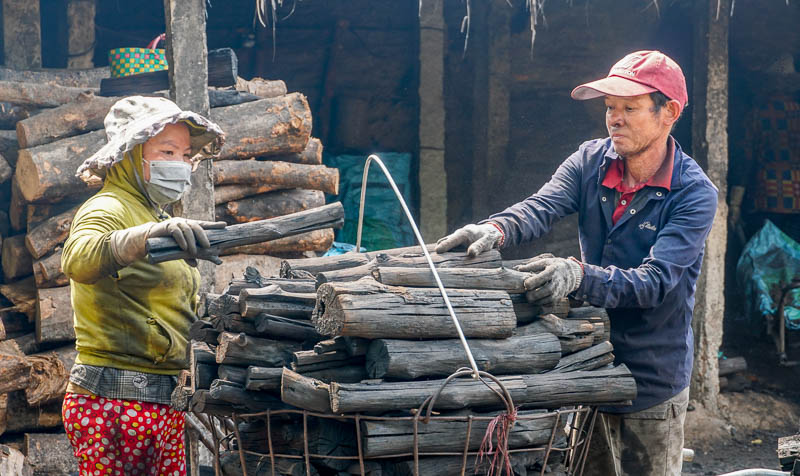No dust, no money
The charcoal making village in Xuan Hoa commune, Ke Sach district has existed for decades and was recognized as a traditional craft village by the People's Committee of Soc Trang province in 2008.
There are more than 200 households working here with over 430 operating kilns, with a total output of 33,620 tons/year. The craft village has created jobs for over 1,000 workers, of which about 50% are female workers.

Just pushing a cart of about 50kg of coal out of the furnace, her face blackened by dust, Ms. Ta Thi Huong in Xuan Hoa commune (Ke Sach district, Soc Trang province) said she has been involved in the coal business for more than 8 years. Her daily job is to bring firewood into the furnace to burn and then take the coal out to transport to the boat, earning from 150,000 - 200,000 VND/day.
"Here, the kiln owner calculates the price by the ton - one ton of coal is 160,000 VND. There are 9 people in my group working together, and at the end of the day, when the kiln owner pays, we divide the money equally. The income is enough to support the family," said Ms. Huong.

Ms. Vo Ngoc Yen - a coal miner in Xuan Hoa commune (Ke Sach district, Soc Trang province) said that thanks to this job, many families without fields like hers have a stable income. Currently, Ms. Yen has an income of about 4 million VND per month.
Ms. Vo Thi Phuong in Xuan Hoa commune (Ke Sach district, Soc Trang province) shared that the job of making charcoal is very hard, often exposed to dust and high temperatures. "When putting firewood into the hot furnace. When the charcoal is cooked, the smoke and dust are so thick that you have to cover your face to avoid getting into your nose and mouth. But even if you cover yourself, the dust still sticks to your face and your clothes are black," Ms. Phuong said.
Need solutions to handle dust and smoke from coal production
Although it provides jobs and a fairly stable income for people, the coal mining profession is also revealing some problems such as dust pollution from coal, affecting the health and daily life of people in the area.

Last August, a working group from the Ministry of Science and Technology visited the craft village to survey the current situation and record opinions and recommendations from people directly involved in production as well as people living in the area.
From there, experts and scientists will join in to find scientific solutions towards sustainable traditional coal production, bringing high economic efficiency and minimizing environmental impact.
To make charcoal, wood and other firewood must be put into the furnace, lit until it burns into charcoal. Each batch takes from 20 days to a month to burn. When the charcoal is cooked, wait about 20 days for it to cool before removing it from the furnace and selling it to traders. Because the furnace takes so long to burn, people in the West call it a charcoal pit.











